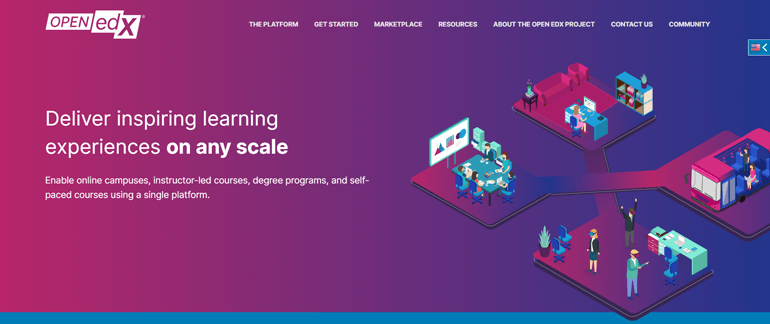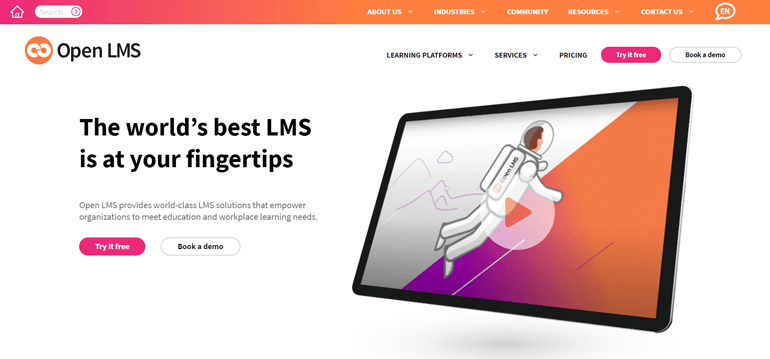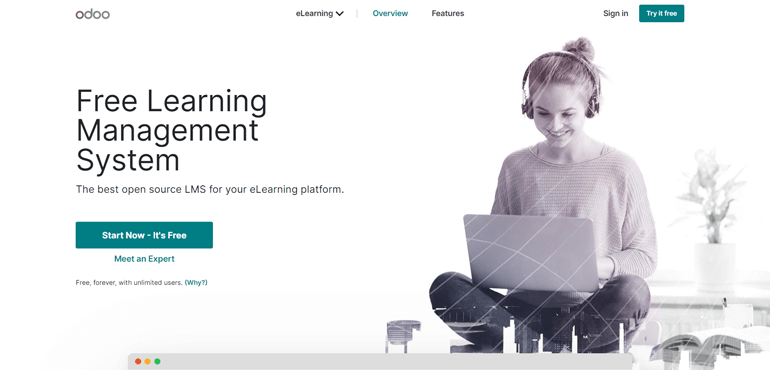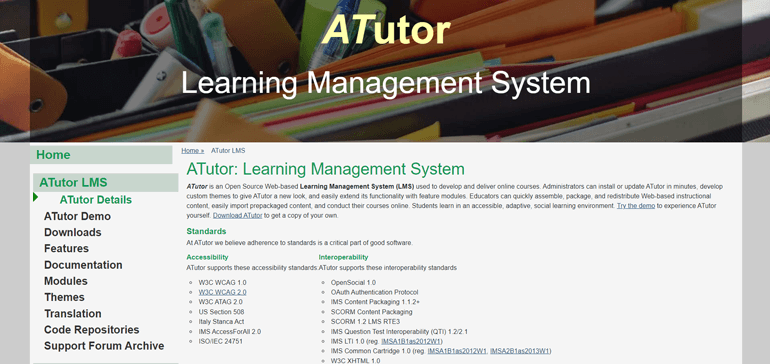Do you want to use an open source LMS but having difficulties to choose one? Wondering which is the best open-source learning management system? Then, this article is just the thing for you.
Open source LMS platforms are the platforms which are freely accessible to everyone and can be modified by anyone. Hence, such LMS platforms give you the full flexibility to customize your LMS site to your heart’s content.
Fortunately, you can find several open source LMS platforms today. However, it might be a daunting task to choose one from various such platforms.
Thus, in this article, we’ll be making a comparison among the top 7 open sources LMS to help you make a better choice. So, let’s begin by knowing how to choose the right open source LMS platform.
How to Choose the Right Open Source LMS Platform?
LMS, an acronym for Learning Management System, is a software application that stores educational materials like video lessons, presentations, and courses, accessible from any device. Besides, it’s also popular for conducting various training and employee onboarding.
So, let’s find out the things you must consider to choose the right LMS platform:
- Know Your Niche: LMS is used for educating, training, onboarding, and more. And as per the niche, different LMS are built. So, if you want to use the LMS for training your employee or use it solely for teaching students, choose the LMS accordingly. Although popular LMSs these days support almost all the niches, it’s better to be alert.
- User Interface: The user interface is one of the important aspects of LMS for both teachers and learners. If the user interface is not simple and easy to navigate around, you might lose your audience. At the same time, it might also be difficult for you to get started.
- Audience Size: LMS supports a range of audiences; while some are suitable for small audience sizes, others are suitable for large ones. So, know your audience size and choose the LMS that can fulfill your demand.
- Technical Requirements: Technical requirements include many things like supported content types, grading systems, analytics, certifications, customer support, security, and so on. Therefore, you must first list what you want in your course or training and choose the LMS that offers the same.
For a detailed guide, read our article on must-have learning management system features.
Now, let’s dive into the list of the seven best open source LMS platforms.
7 Best Open Source LMS Platforms 2022 (Compared)
1. Canvas

Canvas is an open source LMS that is built to make the process of teaching and learning easier for all. It supports customization and is adaptable and reliable. Besides, the community powered by Canvas is one of the largest, most connected, and most active, where you can communicate with other users.
Canvas lets you add video and audio or even interact face-to-face with the learners. Its responsive design makes the system run across all screen sizes without any complication. Offering everything in a single place, one can get all the course materials, grades, communication tools, and actionable insights right from Canvas LMS.
Key Features
- 99.9% system uptime
- Easy upload and sharing of information
- Personalized learning
- Canvas API to link other apps and tools
- Accepts unlimited file size for audio and video contents
Pros
- Cloud-based
- Large number of options for customizations
- Sends alerts/notifications for important events
- Easy for third-party integration
Cons
- Might be difficult to get started
- Presence of some useless tabs
- Frequent issues while navigating and editing
2. Moodle

Next on the list of best open source LMS platforms we have Moodle – a fully customizable online learning management system. Developed in the early 2000s, it has improved teaching and learning outcomes with its feature-rich platform. It has powerful addons that you can integrate into your site.
At the same time, you get complete control of everything, including data privacy and security to the site’s functionality. It lets you use custom themes through which you can give the feel of your brand color and logo to your learners. Using the platform, you can also implement a fully remote or blended learning approach.
Key Features
- Translated into 100+ languages
- Offline access with Moodle app
- Badges and certificates available
- Custom report and analysis
- Calendar, messaging, and notifications for learners
Pros
- Completely free
- Large number of addons and plugins
- Vast online community of user groups
- Cross-browser compatibility
Cons
- Might not suit for a large mass of learners
- Admin interface is quite difficult to get familiar with
- Lacks flexibility
3. Open edX

Open edX is one of the most successful open source learning management systems trusted by top organizations like EDX, IBM, Microsoft, Harvard, MIT, and so on. As of the date, the article is written, it has deployed 50K courses through various sites worldwide. The platform supports 53 languages.
Likewise, the Times Higher Education World University report states that out of the top 10 universities, nine use Open edX; this proves that the LMS is trustworthy and flexible. Besides, you can use interactive content like adaptive video streaming, animation, AR, VR, and more.
Key Features
- Customizable and easy to use
- Real-time data analysis
- Interactive forums and discussion boards
- Cross-device compatibility
- Supports live video conferencing
Pros
- Wide choice of content types
- Provides verified certificates on course completion
- Let you create courses as well as degree programs
Cons
- Limited third-party integration
- Lacks course structure
4. Forma LMS

Forma LMS is a modern and responsive open source LMS with an engaging user interface. It’s specially designed to deliver online training courses or corporate training for companies. Additionally, you can integrate it with any intranet software and extend the functionalities using a wide range of plugins.
Similarly, it provides the opportunity of managing multiple clients and brands with custom layouts. Besides, you can also easily create custom reports and add as many features as you require to meet your need. It offers plenty of configuration and automation options for course management.
Key Features
- Complete control of the courses
- PDF certificates after course completion
- Allows to create webinars and virtual classroom
- Integrates eCommerce features
- Automatic notifications for important events like user registration
Pros
- Responsive layout
- Easy to customize and integrate
- Suitable for the business of all sizes
Cons
- Might be difficult to integrate different languages
- Lacks behind in customer service
5. Open LMS

Open LMS, just as its name, is the open source LMS that empowers organizations and workplaces to meet their learning needs. It opens the door of flexibility for you to adapt open source LMS without merchant and commitment pressure. Open LMS also provides industry-leading customer support with the largest support team working 24/7.
Meanwhile, it hosts the clients on Amazon Web Service (AWS), which guarantees security, scalability, and uptime for the user worldwide. Other sources like online resources library, community site, Open LMS Academy, and YouTube channel are also available to guide you.
Key Features
- Moodle-based LMS platform
- Easy integration with leading education-related products
- Simple and intuitive user navigation experience
- Personalized learning experiences
- Full mobile and offline access
Pros
- Highly reliable
- Quicker to get started
- Continuous innovation
Cons
6. Odoo

Oddo is another most loved open source learning management system with over 7 million users. The platform lets you add all kinds of content to the courses, like videos, infographics, external links, etc. At the same time, it provides access to over 1 million royalty-free images and graphics to make your content look more vibrant.
Quizzes, points, badges, and Q&A, are other elements you can easily add to engage students and show their progress. This can lead to meaningful learning experiences, increased attention and focus of the learners. You can also make learners engage with your community through forums, leaderboards, emails, and reviews.
Key Features
- Engaging content
- Self-paced learning
- Drag and drop interface
- Quizzes and reviews available
- Analytics for participation, feedback, and revenue reports
Pros
- Easy navigation with a simple interface
- Robust features
- Enough customization options
- Easy third-party integration
Cons
- Difficult to maintain
- Long waiting time for support
- Lack of proper guidance in documentation
- Frequent bugs
7. ATutor

Lastly, we have ATutor for the comparison among the best open source LMS platforms. The LMS is designed with accessibility in mind and a wide range of features to ensure more user participation. It makes instructors easy to assemble, distribute and import prepackaged content to conduct the online course.
For better security, it encrypts passwords, and forgotten passwords are reset instead of retrieving them through email. On the other hand, users of ATutor have an inbox through which they can exchange private messages with other users. Not to mention, users can also export and save messages.
Key Features
- Individual content usage statistics
- Allows to create work groups for various purposes manually
- Content editor available in both HTML and plain text form
- Allows to send bulk emails to course members and assistants
- Developer documentation is available for those wishing to develop core features
Pros
- Easy to install, configure, and run
- Available in both open source and hosted version
Cons
- GUI is old-fashioned
- Supports only web platform
Wrapping It Up!
That takes us to the end of our comparison between the seven best open source LMSs. Choosing the best platform is definitely not an easy task. But these open source LMS platforms are outstanding when utilized properly.
So, with our comparison, we’re confident that you can now choose a winner for yourself and start creating an online course.
The LMSs mentioned above have their own specialties. Hence, figure out your demands for LMS and choose the one.
If you’re in the process of creating an LMS website, why not explore our article on how to create LMS website in WordPress? To get started, you can also try Masteriyo – a free WordPress LMS plugin with plenty of features.
For more of such articles, visit our blog page. Also, you can follow us on Twitter and Facebook to get notified about new articles. And if you like to add something more, you can drop a comment below.